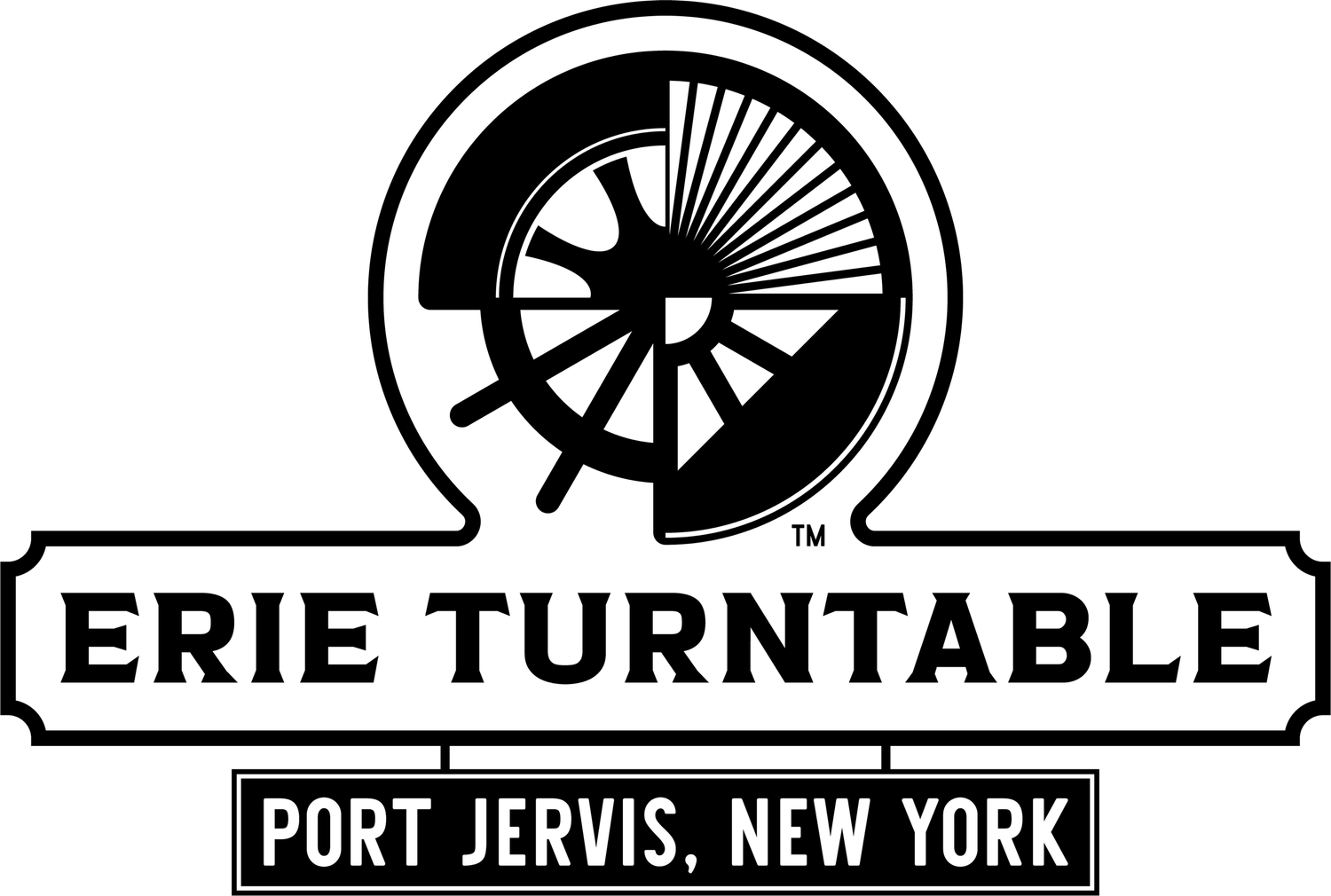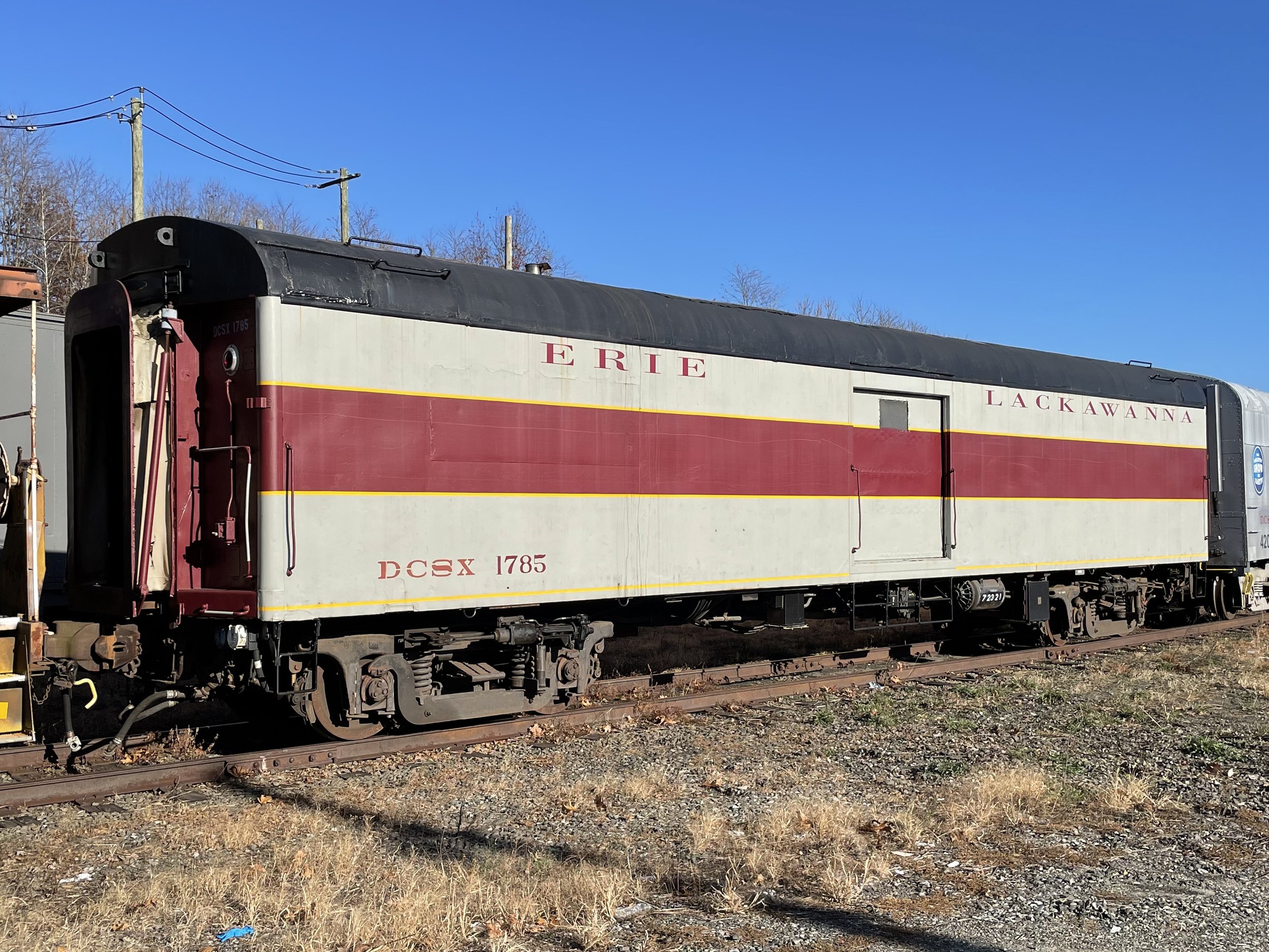“Erie Lackawanna” power car 1785
QUICK FACTS
Model: power car
Built: late April/early May 1953
Builder: St. Louis Car Company, St. Louis, MO
Past Railroad Owners: U.S. Army, Amtrak, Heber Valley Railroad
Current Owner: TOYX, Inc.
Power car No. 1785 was was the ninth of 89 medical service ambulance kitchen cars (Nos. 89600 to 89688) ordered by the U.S. Army Transportation Corps on January 5, 1952 and constructed between April 1 and October 30, 1953 by the St. Louis Car Company on job No. 1773. These cars were built for domestic (mainland U.S.) service, replacing similar cars that had been sent overseas to Korea during the Korean War. The No. 1785 was the ninth car in the order, and was originally constructed as U.S. Army (USAX) No. 89608. It was delivered in the Army’s standard olive drab green with white reporting marks in a typical “Railroad Roman” typeface.
The car was designed to prepare meals for up to 100 troops on ambulance trains, which were used to move wounded soldiers from a port of entry to bases or other facilities throughout the continental United States. It originally featured a fully working kitchen, including a double oven, a coal-fired stove, ice boxes, food storage lockers, a hot water heater, three sinks, a pressurized water system, and even a shower. The cars originally had eight sealed windows per side to let in natural light, in addition to a large sliding baggage-style door on either side for the loading of food and supplies.
Soon after the new ambulance trains were delivered to the Army, the Korean conflict ended, and these 89 cars remained stored pending another conflict. By the early 1960s, the military had started to adopt long-distance air travel, which quickly supplanted ocean liners and transport ships as the predominant transoceanic transportation and eliminated the need for cross-country train transportation upon these ships reaching a port. Most of these ambulance kitchen cars were stored for over 20 years and were retired without ever entering military service.
After retirement, 38 of these diminutive kitchen cars were sold to Amtrak in 1973-1974 and converted into "shorty" baggage cars by Amtrak (a reference to the car’s 50 ft. length, compared to the standard 85 ft. length of other passenger cars). USAX No. 89608 was converted to Amtrak shorty baggage car No. 1352, a process which saw all of the original kitchen equipment removed and all of the windows plated over. Head-end power (HEP) capability was added to the car in 1984. In 2002, the No. 1352 was sold to the Heber Valley Railroad and renumbered HVRX No. 3684. The car was stored in Ohi-Rail’s Minerva, Ohio yard for fourteen years.
The car was ultimately donated to the Dining Car Society in December of 2016. While it is not an original Erie Lackawanna car, it closely resembles the Erie Lackawanna’s real Osgood-Bradley milk cars. It was therefore renumbered as No. 1785, one number above the last real EL milk car. The car arrived in Scranton, Pennsylvania in April of 2017, where it was converted to a power car by DCS volunteers with the addition of a 350kW generator and two fuel tanks. It entered service as an operable power car in July of 2017. The car was moved to Port Jervis, NY on April 21, 2022.
The No. 1785 is used to provide 480V power to the dining car and other passenger equipment during stationary meal service at the yard in Port Jervis, as well as during off-site events like Operation Toy Train’s annual Toys for Tots collection train.

